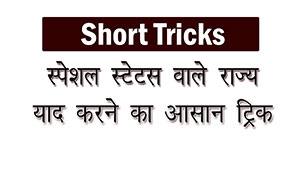Area Questions Answers
-
22. If the area of a square with the side a is equal to the area of a triangle with base a, then the altitude of the triangle is.
- a
- a/2
- 2a
- None of above
Answer And Explanation
Answer: Option C
Explanation:
\begin{aligned}
\text{We know area of square =}a^2 \\
\text{Area of triangle =}\frac{1}{2}*a*h \\
=> \frac{1}{2}*a*h = a^2 \\
=> h = 2a
\end{aligned} -
23. What will be the ratio between the area of a rectangle and the area of a triangle with one of the sides of the rectangle as base and a vertex on the opposite side of the rectangle ?
- 1:1
- 1:2
- 2:3
- 2:1
Answer And Explanation
Answer: Option D
Explanation:
As far as questions of Area or Volume and Surface area are concerned, it is all about formulas and very little logic. So its a sincere advice to get all formulas remembered before solving these questions.
Lets solve this,
\begin{aligned}
\text{Area of rectangle =}l*b\\
\text{Area of triangle =}\frac{1}{2}l*b\\
\text{Ratio =}l*b:\frac{1}{2}l*b \\
= 1:\frac{1}{2} \\
= 2:1
\end{aligned}
One little thing which should be taken care in this type of question is, be sure you are calculating ration in the given order of the question.
If it is ratio of triangle and rectangle then we have to write triangle formula first. cheers :) -
24. A triangle and a parallelogram are constructed on the same base such that their areas are equal. If the altitude of the parallelogram is 100 m , then the altitude of the triangle is.
- 200 m
- 150 m
- 148 m
- 140 m
Answer And Explanation
Answer: Option A
Explanation:
Let the triangle and parallelogram have common base b,
let the Altitude of triangle is h1 and of parallelogram is h2(which is equal to 100 m), then
\begin{aligned}
\text{Area of triangle =}\frac{1}{2}*b*h1\\
\text{Area of rectangle =}b*h2\\
\text{As per question }\\
\frac{1}{2}*b*h1 = b*h2 \\
\frac{1}{2}*b*h1 = b*100 \\
h1 = 100*2 = 200 m \\
\end{aligned} -
25. The area of rhombus is 150 cm square. The length of one of the its diagonals is 10 cm. The length of the other diagonal is:
- 15 cm
- 20 cm
- 25 cm
- 30 cm
Answer And Explanation
Answer: Option D
Explanation:
We know the product of diagonals is 1/2*(product of diagonals)
Let one diagonal be d1 and d2
So as per question
\begin{aligned}
\frac{1}{2}*d1*d2 = 150 \\
\frac{1}{2}*10*d2 = 150 \\
d2 = \frac{150}{5} = 30 \\
\end{aligned} -
26. Find the circumference of a circle, whose area is 24.64 meter sqaure
- 17.90m
- 17.80m
- 17.60m
- 17.40m
Answer And Explanation
Answer: Option C
Explanation:
\begin{aligned}
\text{Area of Square =} \pi*r^2\\
=> \pi*r^2 = 24.64 \\
=> r^2 = \frac{24.64}{22}*7 \\
=> r^2 = 7.84 \\
=> r = \sqrt{7.84} \\
=> r = 2.8 \\
\text{Circumference =}2\pi*r\\
= 2*\frac{22}{7}*2.8 \\
= 17.60m
\end{aligned} -
27. The wheel of a motorcycle, 70 cm in diameter makes 40 revolutions in every 10 seconds. What is the speed of the motorcycle in km/hr
- 30.68 km/hr
- 31.68 km/hr
- 32.68 km/hr
- 33.68 km/hr
Answer And Explanation
Answer: Option B
Explanation:
In this type of question, we will first calculate the distance covered in given time.
Distance covered will be, Number of revolutions * Circumference
So we will be having distance and time, from which we can calculate the speed. So let solve.
Radius of wheel = 70/2 = 35 cm
Distance covered in 40 revolutions will be
\begin{aligned}
\text{40 * Circumference } \\
= \text{40 * 2*\pi*r } \\
= 40 * 2* \frac{22}{7}* 35 \\
= 8800 cm \\
= \frac{8800}{100} m = 88 m\\
\text{Distance covered in 1 sec =}\\
\frac{88}{10} \\
= 8.8 m \\
Speed = 8.8 m/s \\
= 8.8*\frac{18}{5} = 31.68 km/hr
\end{aligned} -
28. If the radius of a circle is diminished by 10%, then the area is diminished by:
- 200%
- 210%
- 300%
- 310%
Answer And Explanation
Answer: Option C
Explanation:
Let the original radius be R cm. New radius = 2R
\begin{aligned}
Area = \pi R^2 \\
\text{New Area =} \pi {2R}^2 \\
= 4\pi R^2 \\
\text{Increase in area =}(4\pi R^2 - \pi R^2) \\
= 3\pi R^2 \\
\text{Increase percent =} \frac{3\pi R^2}{\pi R^2}*100 \\
= 300 \%
\end{aligned}














